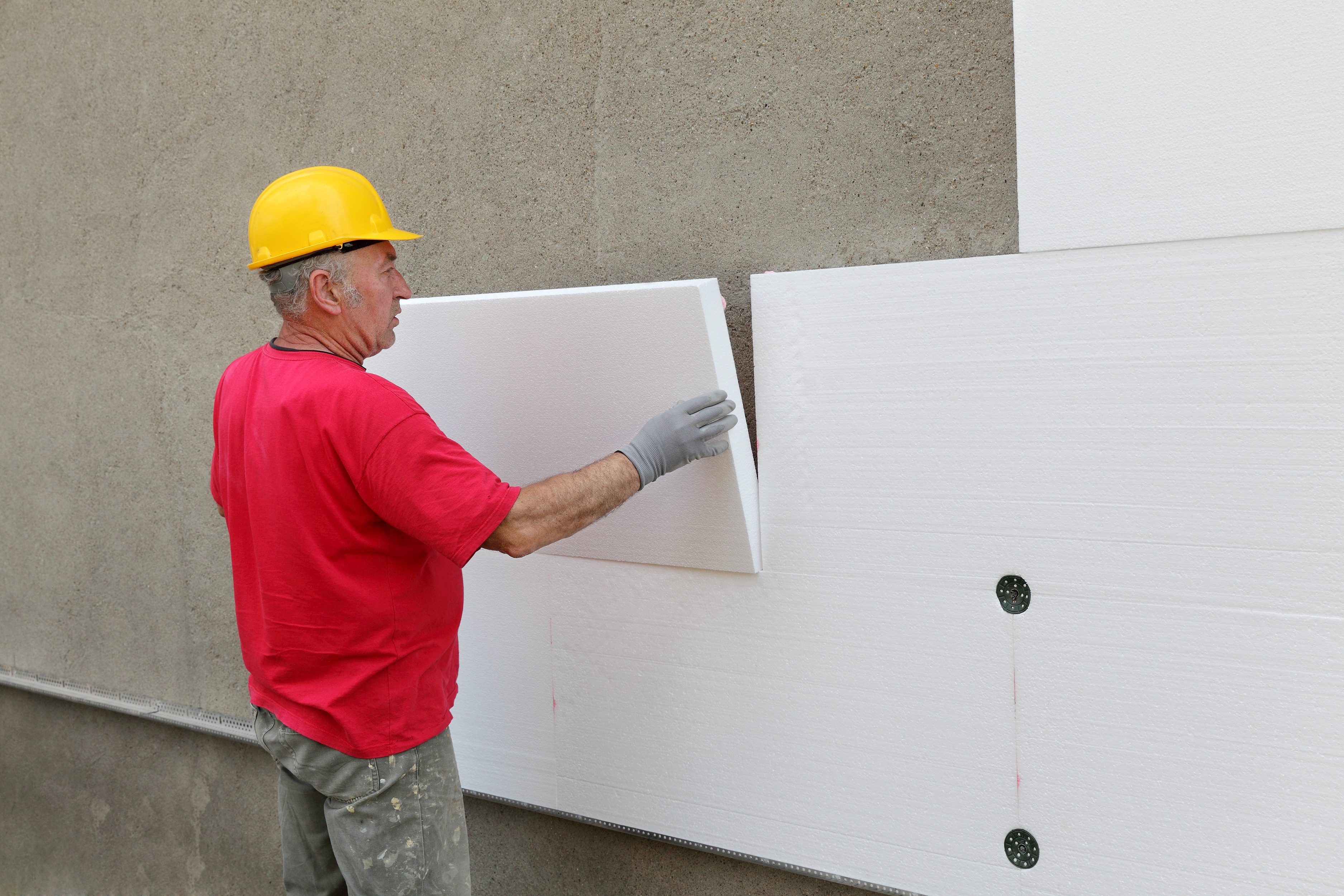Insulation is not the most marketable building component, but it is essential to both the performance of the building and health of the occupants. Without sufficient insulation, large portions of the energy used to heat or cool a building will be lost to the outdoors. Insufficient insulation can also lead to mold problems as heated air rapidly cools and causes water vapor to condense. Historically, mud, asbestos, and cork were used as insulation materials for buildings and pipes. The insulation products available today are much more effective, especially in conjunction with air sealing and ventilation.
Insulation, which contains many tiny air cavities, slows heat transmission when installed on a building’s interior or exterior surface, or in building cavities. Each type of insulation material receives an R-value rating, which is a measure of its thermal resistance. A higher R-value indicates a better insulator. The R-value of materials changes with their density, so especially when installing loose-fill insulation, the appropriate density is needed to achieve peak R-value. Appropriate insulation depends on regional climate and a building’s mass size. Check Pennsylvania building codes for up-to-date minimum R-values for ceilings, walls, crawlspaces, and other building features.
The best way to insulate a building is to have a well-defined thermal boundary. The thermal boundary of a building separates the conditioned (heated or cooled) spaces from outdoor or unconditioned areas. A building should be insulated continuously around the thermal boundary, including corners and edges. The surface of ducts and furnace cabinets that lie outside the thermal boundary, such as in an unfinished basement, should also be insulated. A common problem when creating a thermal boundary is thermal bridging, which happens when conductive materials span across a barrier and allow heat to flow from one side to the other. For instance, when insulation is placed between wooden studs but not behind or covering the studs, the wood will continue to conduct heat through the wall. Avoid thermal bridging by minimizing use of conductive materials such as wood, steel, and aluminum, or by including thermal breaks so that conductive materials are not in contact with each other. A building’s heating load can be calculated by taking into account the various materials in each wall in order to see how insulation affects savings.

Consider Expanded Polystyrene (EPS):
EPS is an ideal choice for green building designs, offering tangible environmental advantages with energy efficiency, recycled content, mold resistance and indoor environmental quality.
EPS can help meet other green building goals via localized manufacturing, which reduces the impacts of transportation and through its use in innovative applications that improve the overall environmental performance of the building envelope. During installation, some EPS applications have shown to consistently reduce jobsite waste and labor costs. And, once installed, the environmental benefits continue with superior insulating properties that result in measurable savings.
Beyond the environmental benefits of the installed product, the energy requirements to make polystyrene can be more favorable than some alternative materials. In one study, when compared to fiberglass insulation, the energy required to produce polystyrene foam insulation is 24 percent less than what is needed to make the amount of fiberglass needed to achieve an equivalent R-value at a representative volume.
Key Environmental Attributes
- Since the 1950s, EPS has always been CFC- and HCFC-free
- EPS provides stable R-value and does not need to be adjusted for age
- Recycled content can be specified for certain building applications
- EPS mold resistance tests favorably in accordance with ASTM C1338
- With hundreds of plant locations in North America, EPS is manufactured locally
- EPS does not adversely affect indoor air quality
EPS foam insulation can contribute toward green building recognition in a variety of point or credit categories including energy efficiency, recycled content, localized distribution, indoor air quality, sustainable sites and innovation. Several structural system applications, like insulating concrete forms (ICFs) and Structural Insulation Panels (SIPS) that use EPS are commonly recognized by LEED and other green building guidelines as providing key environmental advantages.
Superior Insulating Properties
For maximum energy efficiency, EPS rigid foam insulation can be specified to achieve the desired thermal resistance and can significantly reduce air leakage that may occur in roof, wall and below grade assemblies. The amount of insulation required will vary depending on the building design, climate and energy costs, making it important to choose the most cost effective R-value per inch.
EPS delivers R-value ranging from 3.60 to 4.20 per inch. It is the only rigid foam insulation that offers stable thermal resistance from the point of manufacture. Foam insulation is effective in buildings with space limitations and where higher R-values are needed. EPS rated at R-4 per inch of thickness can provide up to two times greater insulation than traditional insulating materials of the same thickness.
Other rigid foam insulation materials require testing to determine their long-term thermal resistance (LTTR) which can add to product development costs and render a calculated ‘guess’ at the insulation’s performance over time. EPS does not have to conduct such tests because it does not experience thermal drift, meaning its R-value remains constant throughout the life of the building.
Green Building Case Studies
- Phillip Merrill Environmental Center
- Sarah Susanka's Not So Big House
- Pennsylvania Dept of Environmental Protection
- McGinnis Education Center
While all insulation is inherently green due to its energy savings capabilities, green attributes will differ based on each material’s physical properties and its subsequent ability to enhance sustainability.
Most significantly, whether used as a stand alone component or part of a highly engineered building system, EPS’ insulating capabilities contribute to increased energy efficiency. Whether for sheathing, roofing or below-grade installations, EPS plays a key role in a building’s ability to comply with ASHRAE 90.1 – 2001, a benchmark requirement for most green building programs.
Please call or email us to learn more.


